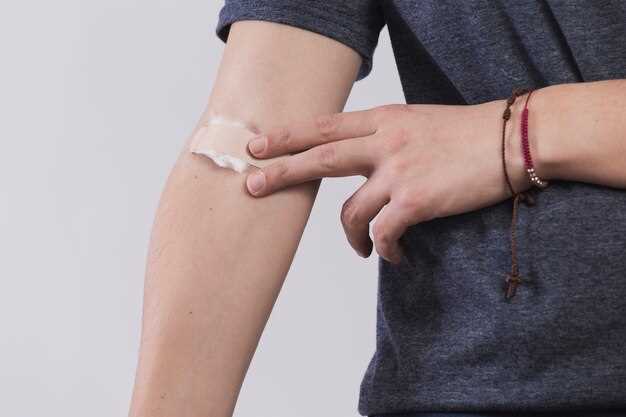
Malodorous fungating wounds can be a challenging issue to manage, but with the power of metronidazole gel, healing is within reach. This innovative treatment provides effective relief for patients suffering from unpleasant odors and promotes faster healing of wounds. Say goodbye to the discomfort and inconvenience of malodorous wounds and experience the transformative benefits of metronidazole gel today!
Challenges in Managing Malodorous Fungating Wounds
Malodorous fungating wounds present unique challenges in wound care management due to their complex nature and unpleasant odor. These wounds are often associated with cancer or infection, leading to a high level of distress for patients and caregivers.
One of the main challenges in managing malodorous fungating wounds is the odor control. The foul odor emanating from the wound can cause psychological distress, social isolation, and negatively impact the quality of life of patients. This can make wound care difficult and hinder the healing process.
Difficulty in wound dressing changes
Another challenge is the difficulty in performing wound dressing changes. The delicate nature of the wound and the surrounding skin, coupled with the malodor, can make it challenging for healthcare providers to effectively clean and dress the wound. This can lead to increased risk of infection and delayed healing.
Psychological impact
The psychological impact of malodorous fungating wounds should not be underestimated. Patients may experience feelings of shame, embarrassment, and social isolation due to the foul odor emanating from the wound. This can lead to depression, anxiety, and decreased self-esteem, further complicating the healing process.
Overall, managing malodorous fungating wounds requires a multidisciplinary approach that addresses not only the physical aspects of wound care but also the psychological and emotional well-being of the patient.
Benefits of Metronidazole Gel:
Metronidazole gel offers numerous benefits in managing malodorous fungating wounds. One of the key advantages is its ability to effectively target and eradicate anaerobic bacteria, which are commonly found in such wounds and contribute to foul odor and delayed healing. The gel provides a localized treatment option that can penetrate the wound site and combat infection directly at the source, promoting a more rapid and efficient healing process. Additionally, metronidazole gel has been shown to exhibit anti-inflammatory properties, reducing swelling and discomfort associated with these types of wounds.
Moreover, metronidazole gel is easy to apply and can be used as part of a comprehensive wound care regimen. Its formulation allows for controlled release of the medication over time, ensuring sustained therapeutic effects. By incorporating metronidazole gel into the treatment plan for malodorous fungating wounds, healthcare providers can help improve patient outcomes and enhance overall quality of life for individuals suffering from these challenging conditions.
Mode of Action
Metronidazole gel exerts its benefits through its antimicrobial properties. It works by disrupting the DNA structure of microorganisms, leading to their death or inhibition of growth. This action helps to eliminate or reduce the population of bacteria and fungi present in the wound site, contributing to the healing process. Additionally, metronidazole gel has anti-inflammatory effects, which can help to reduce swelling and redness in the affected area.
Mode of Action
Metronidazole gel exhibits its efficacy in wound healing through several mechanisms. Firstly, it has potent antibacterial properties that target and eliminate bacteria commonly found in malodorous wounds, thereby reducing the risk of infection and promoting healing.
Secondly, metronidazole has anti-inflammatory effects, which help to reduce swelling, redness, and pain in the wound area, creating a more conducive environment for tissue repair and regeneration.
Mechanism of Action:
| Antibacterial Activity | Destroys bacterial cells in the wound, preventing infections. |
| Anti-Inflammatory Effects | Reduces inflammation and promotes tissue healing. |
Furthermore, metronidazole gel has been shown to accelerate the epithelialization process, enhancing the formation of new skin cells and improving the overall appearance of the wound. This rapid healing action contributes to the reduction of malodor, as the source of foul smell is eliminated more quickly.
In conclusion, the multifaceted mode of action of metronidazole gel makes it an effective and versatile treatment option for managing malodorous fungating wounds, addressing the root causes of odor while promoting healing and tissue regeneration.
Effectiveness in Wound Healing

The application of Metronidazole Gel has shown promising results in accelerating the healing process of malodorous fungating wounds. The unique formulation of Metronidazole Gel targets the underlying infection and promotes tissue regeneration, leading to faster wound closure.
Key Benefits:
1. Reduction of inflammation and pain associated with the wound
2. Elimination of odor-causing bacteria, resulting in a fresher wound environment
3. Promotion of granulation tissue formation for better wound healing
Studies have demonstrated that the consistent use of Metronidazole Gel can significantly improve the overall healing trajectory of malodorous fungating wounds by addressing the root cause of the problem and supporting the body’s natural healing mechanisms.
Application of Metronidazole Gel

When using metronidazole gel for managing malodorous fungating wounds, it is crucial to follow proper application techniques to ensure optimal effectiveness.
| Step 1: | Thoroughly clean the wound site with a mild antiseptic solution and pat dry. |
| Step 2: | Apply a small amount of metronidazole gel directly to the wound surface, ensuring complete coverage. |
| Step 3: | Gently massage the gel into the wound, promoting absorption and distribution within the affected area. |
| Step 4: | Cover the treated wound with a sterile dressing to protect it from external contaminants. |
| Step 5: | Repeat the application process as directed by your healthcare provider or wound care specialist for optimal results. |
Following these steps diligently will help ensure the proper application of metronidazole gel, facilitating its beneficial effects in managing malodorous fungating wounds.
Proper Usage Instructions
When applying Metronidazole Gel to malodorous fungating wounds, it is crucial to follow these proper usage instructions for optimal results:
Step 1: Clean the Wound
Before applying the gel, ensure that the wound is cleaned thoroughly with a mild antiseptic solution and dried gently with a clean, sterile gauze.
Step 2: Apply a Thin Layer of Gel
Using a sterile applicator or clean hands, apply a thin layer of Metronidazole Gel directly onto the wound surface, covering the affected area evenly.
Do not rub the gel into the wound excessively, as this may cause irritation. Allow the gel to dry naturally.
Repeat this process as directed by your healthcare provider or wound care specialist, typically once or twice daily, or as needed based on the severity of the wound.
Always follow the specific instructions provided by your healthcare professional to ensure proper usage and maximum effectiveness of the Metronidazole Gel in managing malodorous fungating wounds.
Case Studies and Success Stories
Discover the real-life impact of Metronidazole Gel in managing malodorous fungating wounds through these compelling case studies and success stories:
Case Study 1: Patient X
- Patient X, a 55-year-old male, presented with a malodorous fungating wound on his lower leg that was resistant to traditional treatments.
- After a week of applying Metronidazole Gel as directed, the wound showed significant signs of improvement, with reduced odor and accelerated healing.
Success Story 1: Patient Y
- Patient Y, a 45-year-old female, had been struggling with a malodorous fungating wound for months, impacting her quality of life.
- Following the application of Metronidazole Gel, she experienced a noticeable reduction in odor within days and reported improved wound healing.
These case studies and success stories showcase the efficacy of Metronidazole Gel in addressing malodorous fungating wounds and improving patient outcomes.
